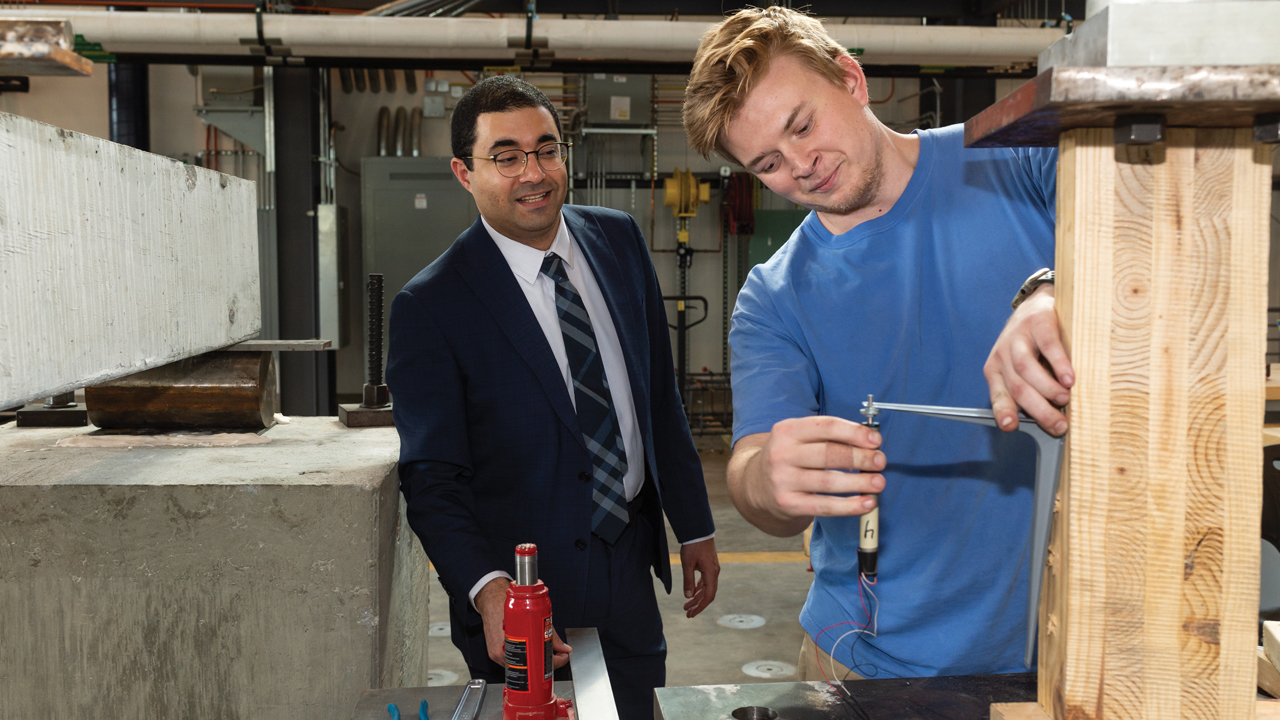Engineering resilient and sustainable structures
By Virginia Speirs

Kadir Sener, assistant professor of civil and environmental engineering, had a busy year. With two projects totaling more than $1 million in federal grant funding, the structural engineering researcher is working to keep infrastructure safe from external hazards using sustainable and resilient solutions.
The first project, led by Sener and Jack Montgomery, associate professor of civil and environmental engineering, received $499,999 from the U.S. Nuclear Regulatory Commission to develop a soil-structure-interaction framework to enhance the regulatory oversight of new generation nuclear power plant designs known as Small Modular Reactors (SMRs).
“Most SMR designs that are currently under development place the critical compartments like the reactor containment or the entire structure below ground level,” Sener said. “This structural layout is advantageous in protecting compartments with critical equipment from external hazards and also mitigating the environmental exposure of contaminants in an accident event. However, partially or fully burying these structures causes potential uncertainties related to the performance against earthquakes, where soil-structure-interaction and interface behavior are expected to have a significant impact on the structural response.”
The research team will conduct experimental and numerical studies to develop a modeling framework for improved safety of SMRs.
“Nearly all studies on interface behavior between soil and structures have focused on small-scale tests or surface footings, which makes it difficult to know if the results are valid for large, buried structures,” Montgomery said. “The geotechnical chamber built into Auburn’s recently opened Advanced Structural Engineering Laboratory will give us the unique testing capability to test large-scale specimens that realistically simulate the interface behavior.”
Montgomery said the experimental data generated during the project will be seminal in guiding vendors and researchers to conduct further investigations on specific structure designs and soil conditions.
Additionally, Sener is the principal investigator on a multi-disciplinary project that received nearly $500,000 in federal and industry funds, including $237,000 from the USDA Forest Service Wood Innovations Grant program.
The project includes four Auburn Engineering professors from three different disciplines who will research the best way to design a sustainable, economically feasible building structure using timber and steel. The goal of the project is not only to provide an environmentally friendly construction option but also a structurally efficient and widely applicable building method.
Co-principal investigator David Roueche, assistant professor of civil and environmental engineering and specialist in cross-laminated timber, says that southern pine, one of the most abundant trees in Alabama, is one of the best species of wood to use in this project.
The current construction practice for mid-rise steel frame buildings uses 60-70% of the overall material in the floor alone. Additionally, most of the material used is concrete — an inexpensive, yet environmentally detrimental material with a substantial carbon footprint. For this reason, cross-laminated timber panels will replace the concrete in this new design.
According to Sener, steel and timber are ideal structural partners. The combination of steel and timber have a degree of structural performance that the individual materials could never reach, he said.
“In order to open the market for mass timber, we wanted to use it with steel structures, since timber alone is not economically feasible for high-rise buildings,” Sener said. “We ended up designing a very sustainable construction system, too.”

